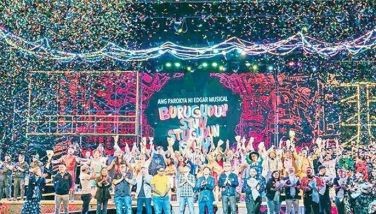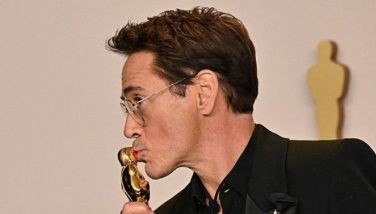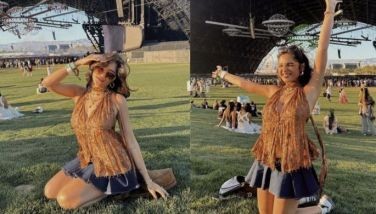Above all, spectacle
Prince Caspian is not the most filmic of the C.S. Lewis’ Chronicles of Narnia. So much of it consists of characters hiking, arguing, and apple-eating. Whatever action there is, is contained in only one chapter, and even then it is subdued, nothing in the grand scale of the last battle in The Lion, the Witch, and the Wardrobe. It is something of a wonder then that director Andrew Adamson and his co-writers Christopher Markus and Stephen McFeely managed to fill in two-and-a-half hours of film with action, romance, magic, and a little theology in his adaptation of this installment of the Narnia series.
Adamson has had to tinker with the relatively simple main story: Prince Caspian the Tenth is rightful heir to the throne of the Telarmines, but his uncle Miraz usurps the throne and plots to kill him. The Telarmines have earlier conquered the Narnians, driving them into hiding in the woods, to which Caspian flees. When he blows a magic horn, he brings back the Pevensie children Peter, Susan, Edmund, and Lucy, the old kings and queens of Narnia, who help him and the Narnians fight Miraz and his forces. To this Adamson adds the assault on Miraz’s castle (the upshot of which may remind some viewers of The Charge of the Light Brigade) and amplifies the intrigues in the Telarmine court. He takes away the Bacchanalia scenes, but he puts what are merely incidentals in the novel, such as Edmund’s flashlight, to good use.
Whatever liberties he takes, however, Adamson seems to have been guided by the goal of turning a simple children’s story into a complex adult (or late adolescent) morality tale. Although one may argue that such a move runs counter to the spirit of the books — childlike faith vs. grown-up perspective is a recurrent motif in the books — one must concede that, granting its vision, the movie succeeds. At the very least, Adamson makes a virtue of necessity, for the actors (William Moseley as Peter, Anna Popplewell as Susan, Skandar Keynes as Edmund, Georgie Henley as Lucy, and Ben Barnes as Caspian) are simply older than the characters they are playing — Peter is supposed to be 14 and Caspian 13.
Lewis’ story glosses over the pressures and conflicts experienced in late adolescence, but it is these that Adamson brings out. Peter’s actions (and faults) are traced to his need to prove his virtus and his capacity to lead, something already adumbrated in the first movie: Thus, a fistfight at the station, his competitive way (not at all his manner in the book) with Caspian, who has to prove his mettle, too, and his near surrender to the White Witch’s blandishments.
The last is an especially felicitous addition by Adamson, although some viewers may find it derivative of a scene in the fourth Harry Potter movie. In the book, neither Caspian nor Peter is tempted — in fact, the hag does not succeed in conjuring the White Witch back to life — and the incident simply allows the two boys to meet. As the scene is adapted in the movie, however, it becomes both an occasion for another fight scene and, more importantly, a thematic statement. The temptation scene is also, oxymoronically, a faithful distortion of Lewis, for whom the most terrible sin is self-idolatry — “They wanted to be nouns, but they were, and eternally must be, adjectives,” he writes elsewhere.
Just as Peter struggles with his issues, so also Susan begins to have amorous feelings — not surprisingly for Prince Caspian. This may — such, it seems, is the effect of romance — charm or repel viewers. (In the cinema where I was, the audience was apparently titillated.) This addition to the original story seems part again of Adamson’s attempt at maturating his source material. One purpose it serves is to rationalize (alas, along patriarchal lines) Aslan’s decision at the ending. In the book, Aslan simply says that Peter and Susan are too old to return to Narnia again. Adamson’s paraphrase, however, is that the two have learned all that Narnia can teach them. Apparently, it’s self-mastery for the boy and romantic love for the girl.
In keeping with the darker mood of this installment, Adamson plays up the deus absconditus (God hidden) theme, keeping Aslan (still voiced by Liam Neeson) out of the movie until the last 30 minutes. Until then, Narnia is a lost Eden, overrun with apples promising no enlightenment; the creatures (fauns, centaurs, and talking animals) look shabbier; the landscape is forbidding; and the kings and queens are fallible. Although it must all end happily, and it does, it is not as optimistic as the first time: You can’t come home again, or as Aslan puts it, “Things never happen the same way twice.”
But Adamson surely knows how to keep an audience in the cinema and to keep them coming back. As movie entertainment it is on the mark, mixing humor, drama, action, and above all, spectacle. The effects are fabulous, in the etymological, pre-fashion show, sense of the word. Such “set pieces” as there are don’t come across as adventitious or overextended. Indeed, Prince Caspian is an adaptation creatively conceived and executed, in most respects worthy of its predecessor, adding contours, depths, and shadows where there may be only flat surfaces. “We have had a time,” says Peter at the end of the book. That is what audiences of the movie will say, too.
- Latest
- Trending





























 Exclusive
Exclusive